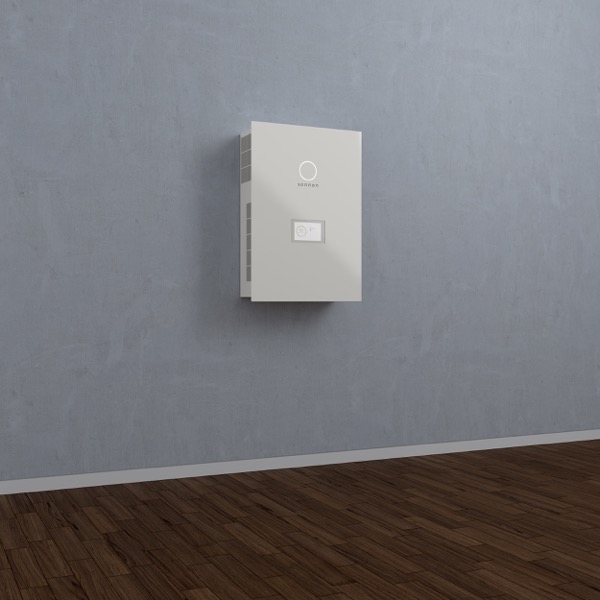
German battery company Sonnen never made the grand splash in the US that Tesla made with its Powerwall. But the company has ambitions to match its US-native rival. Sonnen opened up its US headquarters in Los Angeles just this past January, at first selling a $10,000 battery called the “eco protect,” which offered off-grid capabilities to homeowners that wanted a backup in case of emergency.
This week, Sonnen announced a new stationary storage battery called the eco compact—a 4kWh lithium-iron-phosphate battery that homeowners can buy for self consumption, not just for backup power. The eco compact can be expanded by purchasing additional modules in 4kWh increments up to 16kWh. The base unit costs $5,950 plus installation, which Green Tech Media estimates would fall in the range of $900 to $3,000.
But Sonnen’s base price includes an inverter, and it guarantees the battery for up to 10,000 cycles, which could put it close to competitive with Tesla’s 7kWh Powerwall (which is actually only a 6.4kWh battery, according to the most recent specifications). SolarCity estimates Tesla’s Powerwalls cost about $7,340 after installation and the purchase of an inverter, but Tesla also only guarantees its Powerwall for 10 years or, according to an Australian warranty Green Tech Media cites, just 5,000 cycles. (Of course, this all could change in the coming months—rumor is that Tesla is gearing up to launch Powerwall 2.0 soon.)
Still, Sonnen is quite experienced in stationary storage at this point. It has captured more than 50 percent of Germany’s home battery market, and it has installed more than 12,000 batteries so far.
In an e-mail to Ars, Sonnen CEO Boris von Bormann said that with the eco compact, the company is targeting customers in markets where net metering—solar customers selling their energy back to the utility to offset the cost of the panels—is threatened by regulators. Nevada decided it would end net metering earlier this year, and Hawaii followed suit after residents installed so many solar panels that the state reached the maximum amount of rooftop solar power allowed to be sent back to the utility there. Arizona Public Service (APS) may also reduce how much rooftop solar customers can be compensated for energy they send back to the grid, and California utilities, while preserving retail rates in net metering for existing solar customers until 2019, will transition new solar panel owners to a time-of-use net metering rate, rather than paying them back at the retail rate.
All of these developments mean that rooftop solar customers in these states may find a $6,000 battery for self consumption could help them recoup the cost of those panels over the long term.
Still, the eco compact isn’t going to help a customer get off the grid entirely. In fact, the battery won’t work without grid connectivity. The company’s press release for the eco compact notes that the battery’s software is designed to provide “various grid-tied functions—increasing household solar self-consumption, managing time-of-use, and supporting grid services.” Von Bormann added in an e-mail to Ars that the battery “does not provide backup power functionality or off-grid functionality as it does not create a grid or provide power into the home when the grid goes out.”
That grid dependency is notable because last year the company launched a product called sonnenCommunity in Germany and announced its intent to take it to the US. Owners of solar panels and batteries are linked by sonnenCommunity to a virtual grid in a neighborhood that allows neighbors to trade electricity among themselves or sell power back to the utility. Sonnen said this would make it “the Airbnb of energy.” That sparked suggestions that the company could be a contributor to a utility “death spiral,” where enough solar and storage systems come offline from the utility, causing a decrease in utility revenues, meaning the utility raises rates to maintain revenue, sending more customers to buy solar and storage systems and on and on.
For now, it seems, a $6,000-plus-installation, 4kWh system that’s required to be connected to the grid likely won’t initiate that death spiral. And Sonnen has said it wants to work with US utilities and utility regulating bodies. Von Bormann told Green Tech Media that “Sonnen is already in contact with Arizona Public Service” about participating in distributed energy pilot programs, and in an interview with Utility Drive earlier this year, the company said it hopes to leverage the data gleaned by its battery software about how customers are using solar to help utilities better understand how customers need power.
reader comments
87